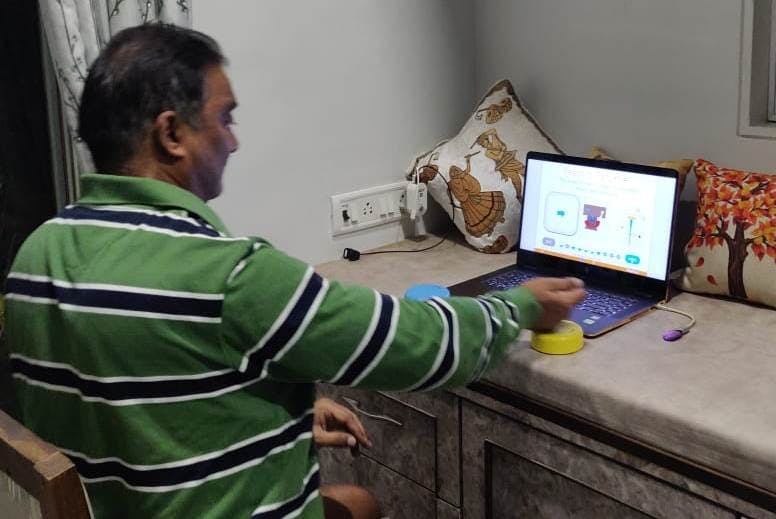Botox can help individuals with spinal cord injuries effectively manage a wide range of complications.
However, its effects are temporary, so it’s essential to understand how to use Botox as a supplement to create long-term results.
To help you better understand what Botox is and how it can be used after a spinal cord injury, this article will discuss:
- What is Botox?
- Complications of SCI that Botox Can Help Manage
- Side Effects of Botox for Spinal Cord Injury
- How to Use Botox for Long-term Effects
What is Botox?
Botox (botulinum toxin A) is a protein complex made from the bacterium Clostridium botulinum. It works by blocking the release of a neurotransmitter called acetylcholine, which prevents hyperactive stimulation.
In other words, Botox is a “nerve block” that blocks signals that make muscles contract. It can be especially helpful after a spinal cord injury where communication between the brain and areas below the level of injury is disrupted.
Generally, the effects of Botox last at least 3 months; however, it’s possible to build a resistance to the injection, so it’s ideal to delay the period in-between treatments as much as possible. Repeat injections should be administered no sooner than 12 weeks apart.
While the effects of Botox can start becoming noticeable within a few days, it won’t take full effect for about 2 weeks following the injection. It’s effectiveness generally depends on the how tight the muscles were prior to injection and how much Botox is injected.
In the following section, we’ll discuss the various reasons why an individual may utilize Botox injections after spinal cord injury.
Botox for Spinal Cord Injury Complications
Botox can help manage a variety of complications that can occur after spinal cord injury including spasticity, neuropathic pain, bladder dysfunction, and excessive sweating.
Below, we’ll discuss how Botox can help manage these complications.
1. Spasticity

Roughly 47-78% of individuals experience spasticity after spinal cord injury, which describes overactive contraction of muscles caused by disrupted communication between the brain and areas below the level of injury.
Spasticity can cause stiff movements, pain, and make it challenging for individuals to perform daily activities. As a result, it can significantly decrease one’s quality of life.
Botox may help relax contracted muscles, making it easier for individuals to move and care for themselves.
Botox is generally only recommended for focal spasticity. Because it is injected directly into the spastic muscle, it’s not ideal for more widespread spasticity.
2. Pain

Another common complication amongst individuals with spinal cord injuries is pain. In fact, nearly 75-81% of individuals report pain after SCI.
Unmanaged pain can significantly interfere with one’s quality of life by making it difficult to move, concentrate, and get a full night’s rest.
As mentioned in the previous section, pain can be caused by spasticity, but it can also be caused by overusing non-affected areas of the body (such as the shoulders for wheelchair mobility) or by nerve damage (neuropathic pain).
It’s suggested that Botox injections can help relieve neuropathic pain after spinal cord injury. This study found that approximately 50% of individuals with severe neuropathic pain experienced 20% or greater pain relief for at least 8 weeks following Botox treatment.
3. Bladder Dysfunction
Nearly 70-84% of individuals experience some extent of bladder dysfunction after spinal cord injury.
The muscle that makes up the wall of your bladder is called the detrusor. When it contracts, it shrinks and there is less space to store urine. This increases the risk of leaking, UTIs, and kidney damage.
In August 2011, Botox received FDA approval for the treatment of urinary incontinence due to detrusor overactivity associated with a neurological condition such as SCI.
It helps relax the detrusor so that the bladder can expand and store more urine.
4. Excessive Sweating

Some people experience excessive sweating (hyperhidrosis) after spinal cord injury due to disrupted communication between the brain and body.
Poorly managed hyperhidrosis can be uncomfortable and contribute to the development of skin irritations and dehydration.
Botox can help treat hyperhidrosis by blocking nerve impulses that activate the sweat glands. Several randomized studies have demonstrated that Botox is a safe and effective form of treatment for excessive sweating.
Now that you understand the various conditions that can be improved by the use of Botox, let’s discuss potential side effects.
Side Effects of Botox for Spinal Cord Injury
While there are many benefits to using Botox for spinal cord injury complications, there are some adverse side effects that may not make it ideal for everyone.
Common side effects of Botox for spinal cord injury complications include:
- Soreness
- Bruising
- Nausea
- General muscle weakness
- Headache
- Fatigue
- Increased sweating
- Urinary retention
- Urinary tract infection
If you experience any of these side effects while using Botox, seek prompt medical attention.
In the following section, we’ll discuss how to take advantage of Botox to promote more permanent relief.
How to Use Botox for Long-term Effects
Botox is a temporary treatment that does not target the underlying nerve damage responsible for complications of spinal cord injury. As a result, individuals must continuously get Botox injections to maintain its effects.
One way to maximize the effects of Botox to promote more long-term benefits is to take advantage of reduced spasticity and participate in an intensive physical and occupational therapy program to improve motor control. When Botox is administered for the purpose of reducing spasticity, the muscles can become more relaxed, allowing for the individual to gain the range of motion necessary to participate in more of the exercises that physical and occupational therapists would provide.
This is possible because the spinal cord can utilize neuroplasticity to regain functions affected by injury. One of the best ways to promote neuroplasticity is through repetitive practice, which reinforces demand for those specific functions.
In an intensive therapy program, individuals are challenged to practice high repetitions of task-specific exercises. This consistent stimulation helps encourage neuroadaptive changes in healthy and undamaged parts of the spinal cord for long-term results.
Botox for Spinal Cord Injury: Should You Try It?
It’s important to understand that Botox will not magically get rid of your pain, bladder problems, excessive sweating, or spasticity.
However, it can help significantly reduce them, which can provide a lot of relief and allow you to focus on your rehabilitation.
Botox is a temporary treatment, and while you can continue to get injections when its effects wear off, it is possible to build a resistance to the drug if it is taken too frequently. Therefore, Botox should not be solely relied upon for managing spinal cord injury complications.
Hopefully, this article helped you understand how you can use Botox to manage spinal cord injury complications.














